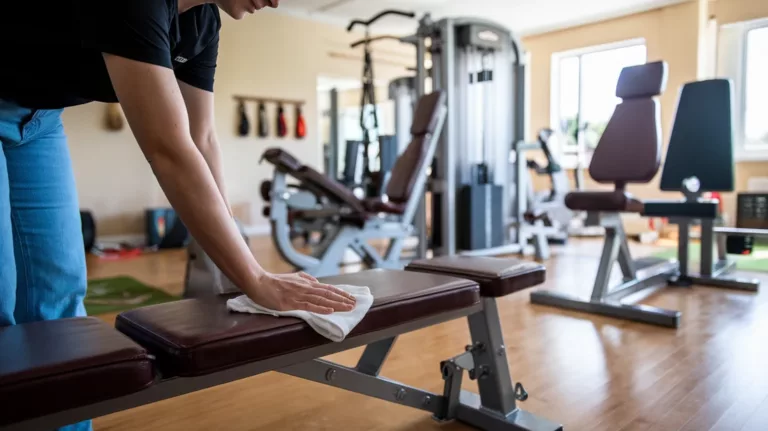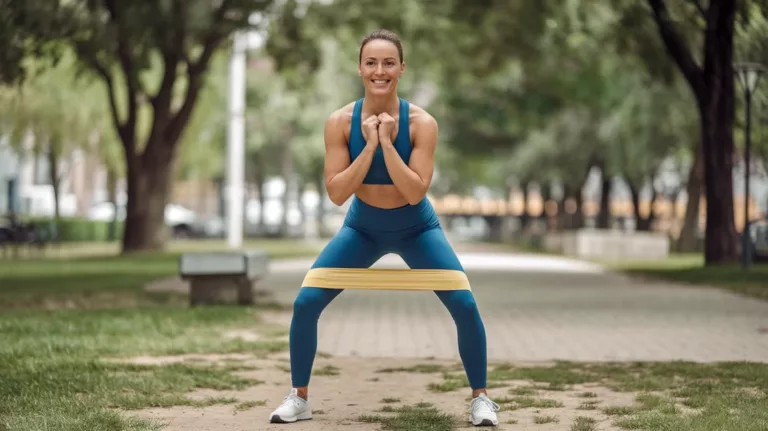Hey there, fitness friends!
Are you tired of battling crowds at the gym just to get your leg day in? I feel you!
Sometimes it feels like it takes longer to get to the squat rack than it does to actually work out. But guess what?
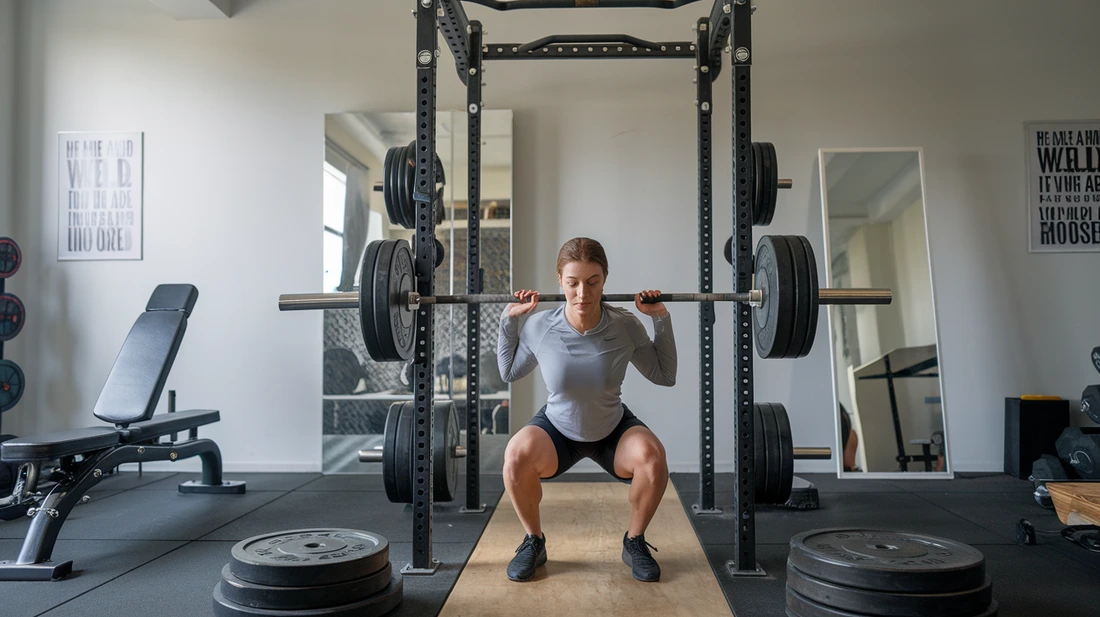
You can skip the gym commute and build amazing legs right in the comfort of your own home.
That’s right, we’re talking about setting up a home gym that’s totally dedicated to leg day.
Carving Out Your Fitness Space
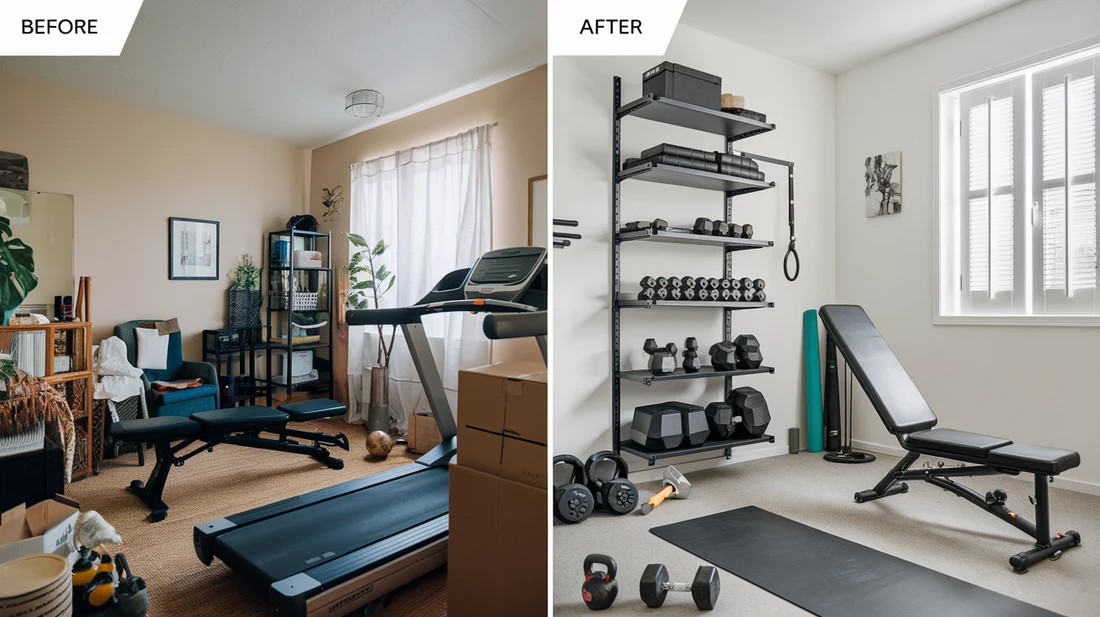
First things first, you’ve got to find a spot for your home gym. It doesn’t have to be huge – even a corner of your living room or a section of your garage will work!
The important thing is to create a space that you actually want to use. Think about it – would you rather work out in a dark, cluttered space, or a bright and organized area?
Here are a few tips to transform your space into a leg-crushing haven:
- Small space? No problem! Use wall-mounted storage for things like resistance bands and yoga mats to free up floor space. And hey, foldable equipment is your new best friend.
- Think about flow: arrange your equipment to make moving between exercises super smooth. Trust me, you don’t want to be tripping over stuff mid-workout!
- Flooring matters: Durable flooring like rubber tiles or interlocking mats can handle those heavy weights and protect your floors (and your downstairs neighbors!). Plus, they offer some nice shock absorption – your joints will thank you.
- Add some cushion: a layer of foam mats or exercise mats makes floor exercises way more comfortable.
- Let there be light! Bright lighting, especially natural light, can seriously boost your mood and energy levels.
- Keep it breezy: good airflow is a must, especially when things start to heat up. Crack a window or use a fan to keep the air circulating.
Gearing Up for Leg Day
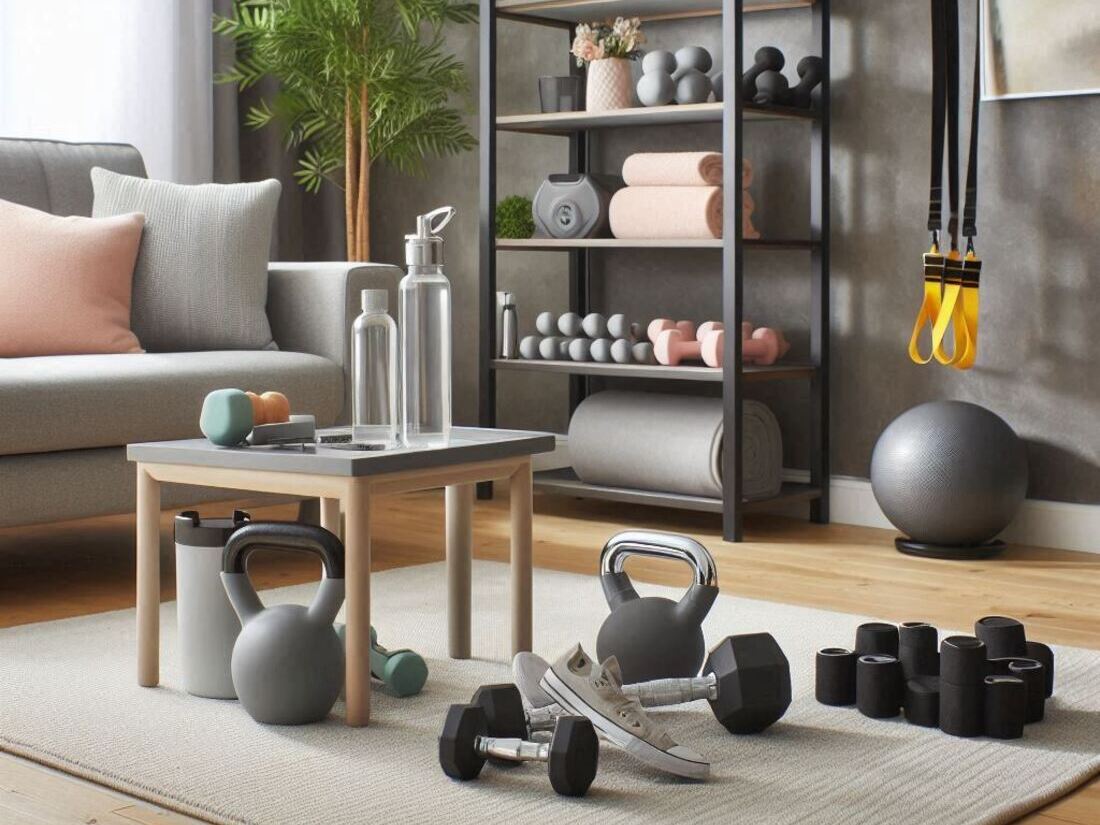
Now for the fun part – equipment!
You don’t need a ton of fancy machines to build awesome legs. Here’s what I recommend:
The Essentials
- Dumbbells: These bad boys are super versatile. Squats, lunges, calf raises – you name it, dumbbells can do it.
- Resistance Bands: Don’t underestimate these! They’re affordable, portable, and add a great challenge to hip thrusts, leg extensions, and hamstring curls.
- Yoga Mat: This is your foundation for floor work, stretching, and anything that requires a comfy, non-slip surface.
If You Want to Level Up
- Barbell and Weight Plates: If you’re serious about building strength, a barbell is the way to go. Just make sure you have enough weight plates to challenge yourself as you get stronger!
- Squat Rack: This is essential for heavy squats and overhead presses. Safety first, folks!
- Leg Press Machine: This machine is a great way to target your quads, hamstrings, and calves with less stress on your joints.
No Budget? No Problem!
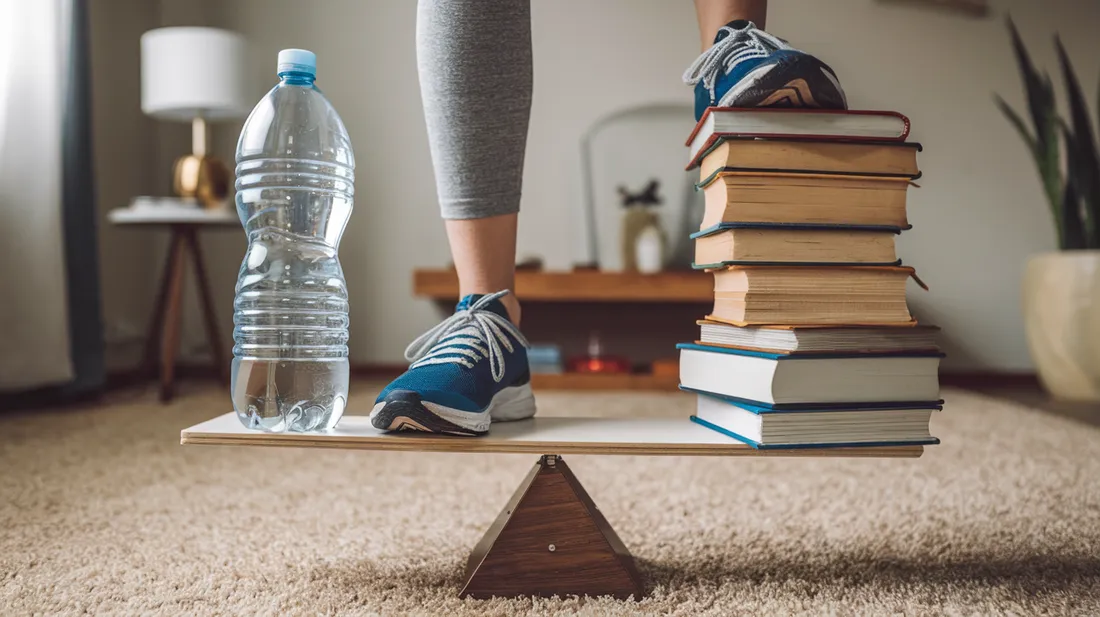
- Water Bottles: Fill these up for some DIY dumbbells.
- Books: Stack them up to create weight plates for your barbell. Get creative!
- Chair: A sturdy chair can be used for triceps dips and elevated push-ups.
- Stairs: Step up your game (literally!) with stair step-ups and box jumps.
Table Structure – Essential Equipment Table
Purpose: To organize and compare different types of leg workout equipment based on fitness level and budget.
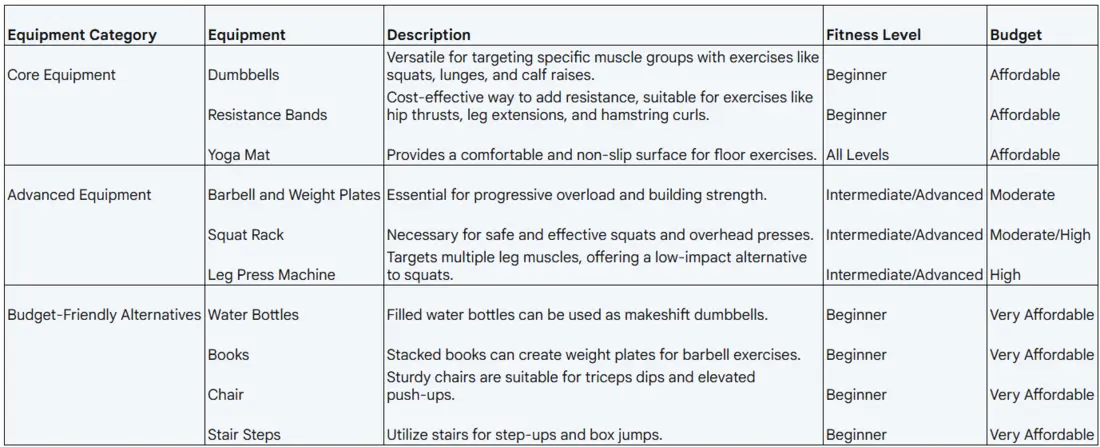
Crafting Your Leg-Day Routine
Now that you’ve got your space and equipment dialed in, it’s time to build a workout routine that gets results.
Just Starting Out?
- Squats: This classic move works your quads, hamstrings, and glutes.
- Lunges: Target those quads, hamstrings, glutes, AND calves with lunges.
- Calf Raises: Sculpt those calves for strong and defined legs.
- Leg Press: A great alternative to squats if you have knee issues.
- Hamstring Curls: Isolate those hamstrings to build strength and definition.
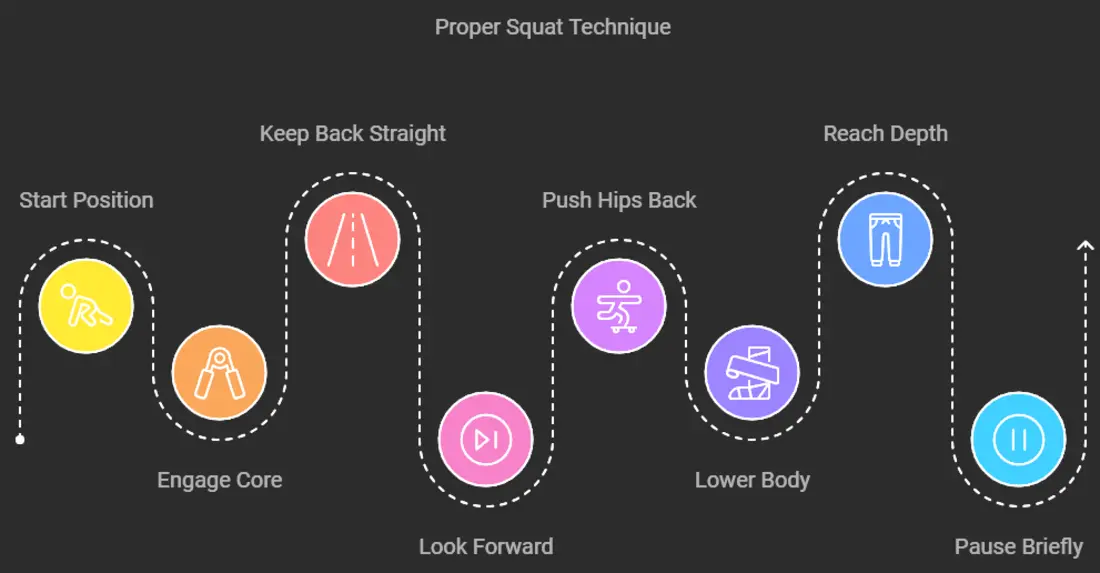
Feeling More Confident?
Take your leg day to the next level:
- Progressive Overload: Keep increasing the weight or resistance to challenge your muscles and promote growth.
- Mix It Up: Try different exercises to prevent boredom and plateaus. Your muscles will thank you!
- Turn Up the Intensity: Incorporate supersets, drop sets, or circuit training to really push yourself.
Sample Intermediate Routine
- Barbell Back Squats
- Walking Lunges with Dumbbells
- Leg Press
- Hamstring Curls
- Calf Raises
Sample Advanced Routine
- Front Squats
- Bulgarian Split Squats
- Leg Press
- Hamstring Curls
- Calf Raises
Workout Routine Table
Purpose: To present workout routines for different fitness levels in a clear and concise way.
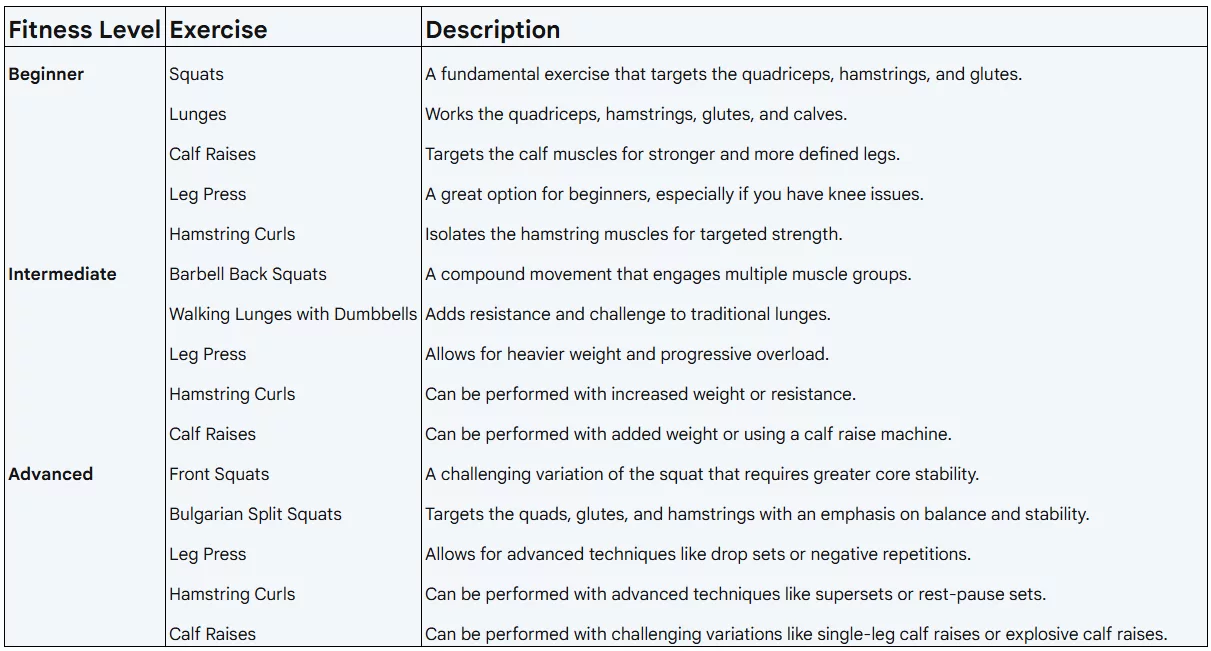
Recovery is Key
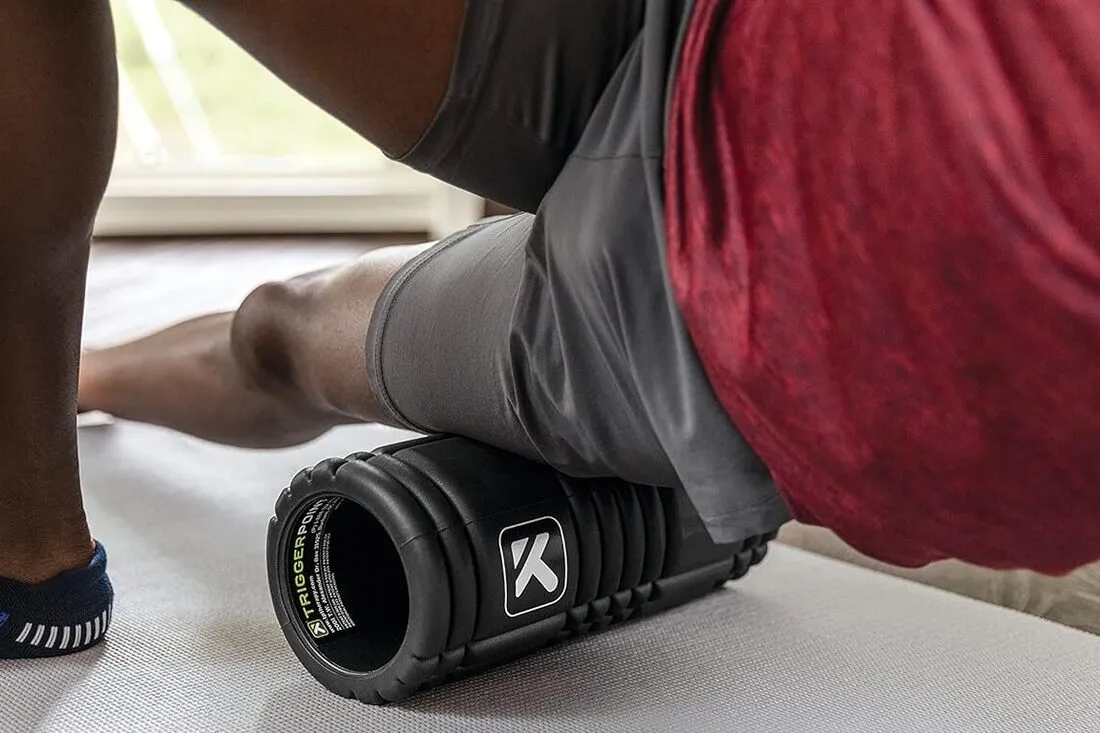
Listen, crushing your workouts is awesome, but remember that rest and recovery are just as important as the workouts themselves.
Here’s how to take care of your body:
- Fuel Up: Eat a balanced diet with plenty of protein, carbs, and healthy fats to help your muscles recover and grow.
- Stay Hydrated: Water is your workout buddy! Make sure you’re drinking enough throughout the day.
- Listen to Your Body: If you’re feeling sore or fatigued, take a rest day or modify your workout.
Remember: Consistency is key! Stick to your workout routine, prioritize rest and recovery, and you’ll be amazed by the results.
FAQs – Your Leg Day Questions Answered!
Q: What if I don’t have a lot of space for a home gym?
A: You don’t need a ton of space to get started! Even a small corner can work. Prioritize essential equipment like dumbbells and resistance bands, and use wall-mounted storage or foldable equipment to save space.
Q: How many times a week should I work out my legs?
A: Aim for 2-3 leg workouts per week, allowing at least 48 hours of rest between sessions. This gives your muscles time to recover and grow.
Q: Can I build muscle without using weights?
A: Absolutely! You can use resistance bands, your own body weight, or even everyday objects like water bottles or books to create resistance. Get creative!
Q: What’s the best way to prevent injuries during leg workouts?
A: Focus on proper form and technique. Start with lighter weights and gradually increase the intensity as you get stronger. Most importantly, listen to your body and stop if you feel any pain.
Q: What should I eat to build leg muscle?
A: Fuel your workouts with a balanced diet rich in protein, carbohydrates, and healthy fats. Protein helps repair and build muscle, carbohydrates provide energy, and healthy fats support overall health.
Testimonials
- “I’ve seen significant improvements in my leg strength and definition since setting up my home gym. It’s so convenient and motivating!” – John Doe
- “I was skeptical at first, but my home gym has completely transformed my fitness routine. I’m stronger and more confident than ever.” – Jane Smith
Key Takeaways
Your Home Gym Leg Day Cheat Sheet
- Location, Location, Location: Find a dedicated space for your home gym, even if it’s just a corner.
- Gear Up: Equip yourself with the essentials: dumbbells, resistance bands, and a yoga mat. Level up with a barbell, squat rack, and leg press machine if your budget allows.
- Workout Wisely: Follow a structured leg workout routine, progressively challenge your muscles, and incorporate variety.
- Rest and Recharge: Prioritize rest and recovery for optimal muscle growth and injury prevention.
- Fuel Your Body: Eat a balanced diet and stay hydrated to support your fitness goals.
- Safety First: Maintain proper form, listen to your body, and avoid overtraining.
Safety Tips Table
Purpose: To provide a quick reference guide for injury prevention during leg workouts.
| Category | Safety Tips |
| Proper Form and Technique | Watch video demonstrations from certified fitness professionals. |
| Consult with a personal trainer for personalized guidance. | |
| Start slow and gradually increase intensity. | |
| Listen to Your Body | Recognize pain signals and stop if you experience sharp pain. |
| Avoid overtraining. | |
| Listen to your body’s limits. | |
| Gradual Progression | Increase weight gradually as you get stronger. |
| Vary your workouts to prevent overuse injuries. | |
| Incorporate rest days to allow your muscles to recover and repair. |
Conclusion – Unleash Your Leg Day Potential at Home!
Setting up a home gym dedicated to leg day is a game-changer! No more crowded gyms, inconvenient schedules, or waiting for equipment.
By creating a dedicated space, investing in the right equipment, and following a consistent workout routine, you can sculpt powerful, strong legs from the comfort of your own home.
Remember to prioritize safety, listen to your body, and celebrate your progress.
Your journey to stronger legs starts today!
Take Action Now – Build Your Dream Leg Day!Ready to ditch the gym commute and build amazing legs at home?
Start by identifying your ideal workout space, then choose the equipment that fits your budget and fitness goals.
Craft a workout routine that challenges you, and don’t forget to prioritize rest and recovery. You’ve got this!
References
Here are some links to reputable fitness websites and scientific articles that you can reference for further info.
Websites:
- American Council on Exercise (ACE): https://www.acefitness.org/
- National Strength and Conditioning Association (NSCA): https://www.nsca.com/
- Mayo Clinic: https://www.mayoclinic.org/
- NHS (UK National Health Service): https://www.nhs.uk/
Scientific Articles:
- PubMed: https://www.ncbi.nlm.nih.gov/home/health/
- Google Scholar: https://scholar.google.com/
Books:
- Strength Training Anatomy by Frederic Delavier
- The Runner’s World Big Book of Running by Amby Burfoot and Bart Yasso
- Yoga Anatomy by Leslie Kaminoff

